Posts Tagged: Norm Gary
No Labor Day Holiday for Honey Bees
On Labor Day, a federal holiday, we celebrate the our country's labor movement, our gratitude, and our achievements. But there is no Labor Day...
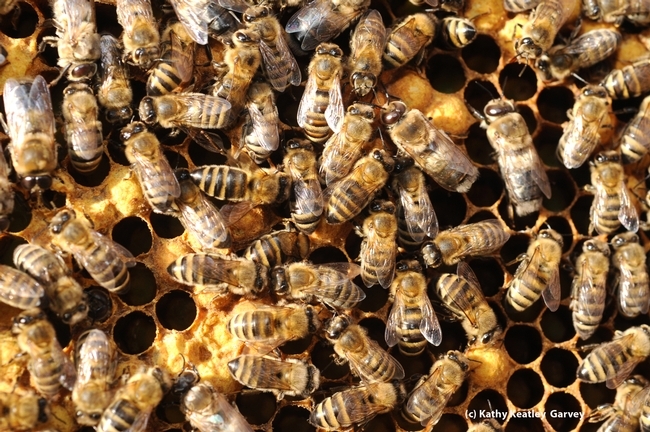
Worker bees are aptly named. They comprise most of the bees in the colony and do most of the work. (Photo by Kathy Keatley Garvey)
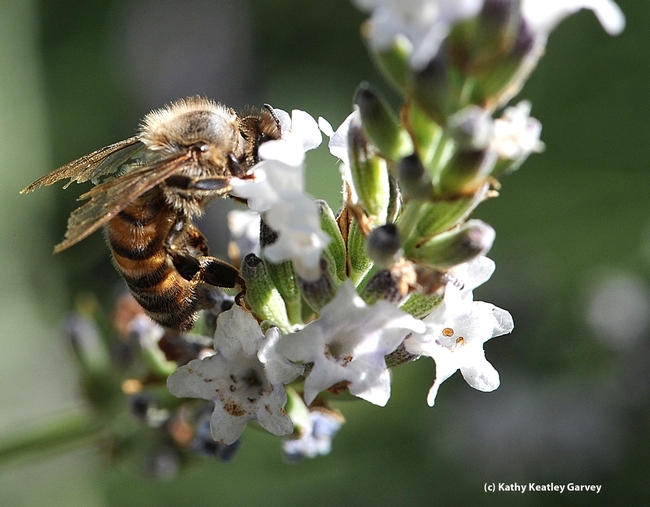
This aging worker bee is all tattered and torn. (Photo by Kathy Keatley Garvey)
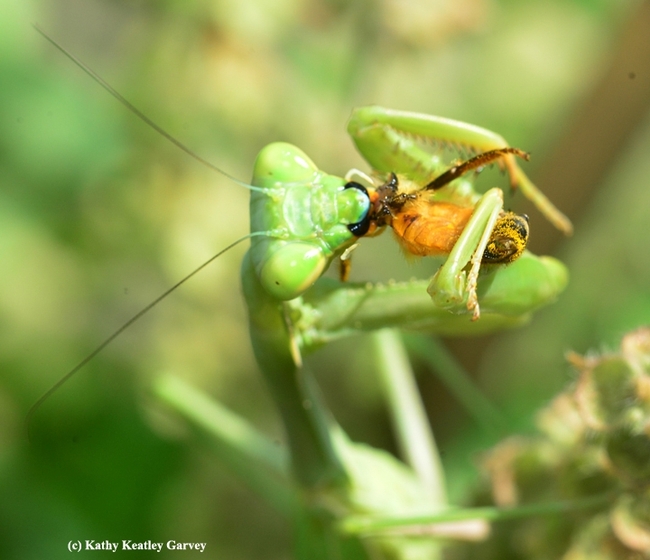
Foraging can be dangerous. Here a praying mantis has just nabbed a worker bee. (Photo by Kathy Keatley Garvey)
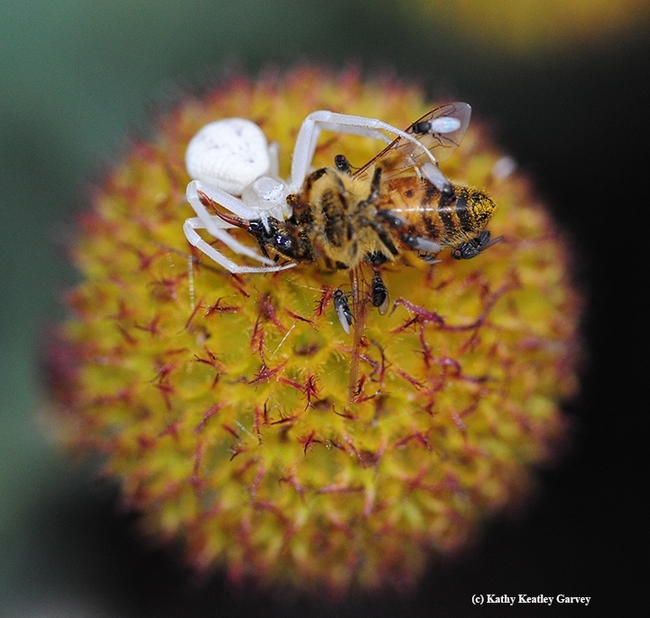
A crab spider feeding on a honey bee. Crab spiders are ambush predators. (Photo by Kathy Keatley Garvey)
National Moth Week: Here's One Moth that Beekeepers Won't Celebrate
During the 11th annual National Moth Week, one thing's for sure: Beekeepers won't be celebrating the beauty, life cycle, or habitat of...
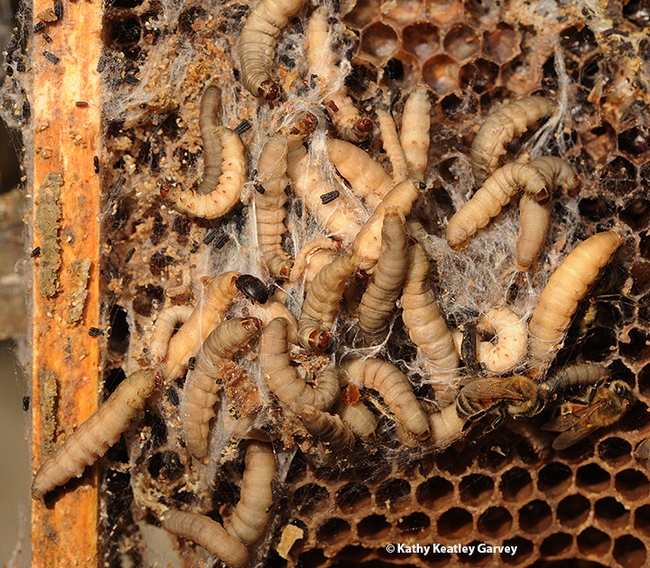
The larvae of the Greater Wax Moth (Galleria mellonella) inside a bee hive. The black dotes are small hive beetles. (Photo by Kathy Keatley Garvey)
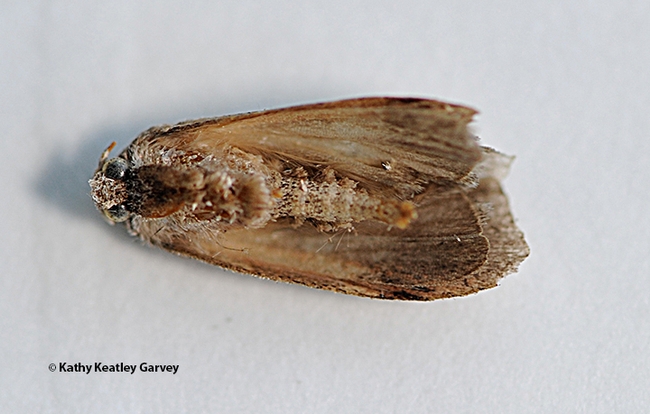
This is a Greater Wax Moth (Galleria mellonella), a night-flying moth that lays its eggs inside the cracks and crevices of a hive, inside and out. (Photo by Kathy Keatley Garvey)
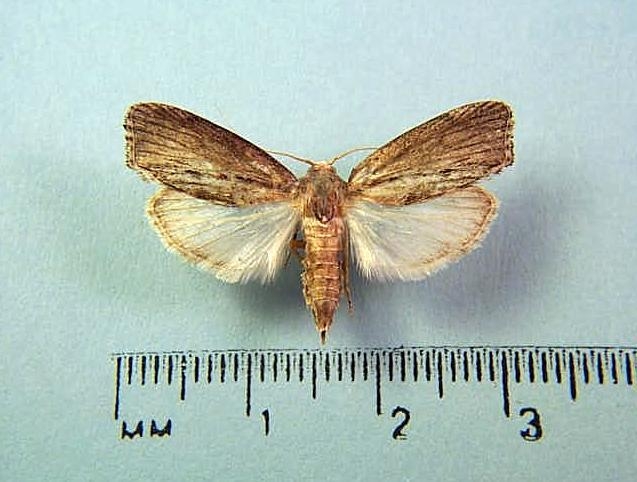
This is a Bohart Museum of Entomology specimen, the Greater Wax Moth. (Photo by Jeff Smith)
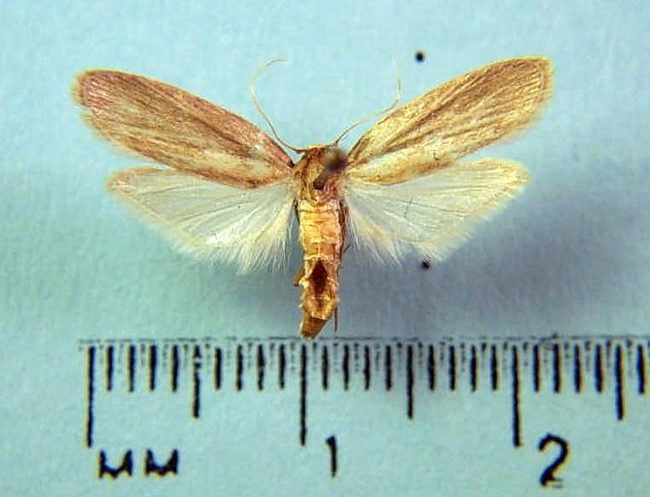
This is a Lesser Wax Moth, Achroia grisella, from the Bohart Museum of Entomology collection. (Photo by Jeff Smith)
Ever Seen a Honey Bee Foraging on a Daffodil?
Ever seen a honey bee foraging on a daffodil? In the early spring, blooms are few and far between. Daffodils are not usually considered "bee...
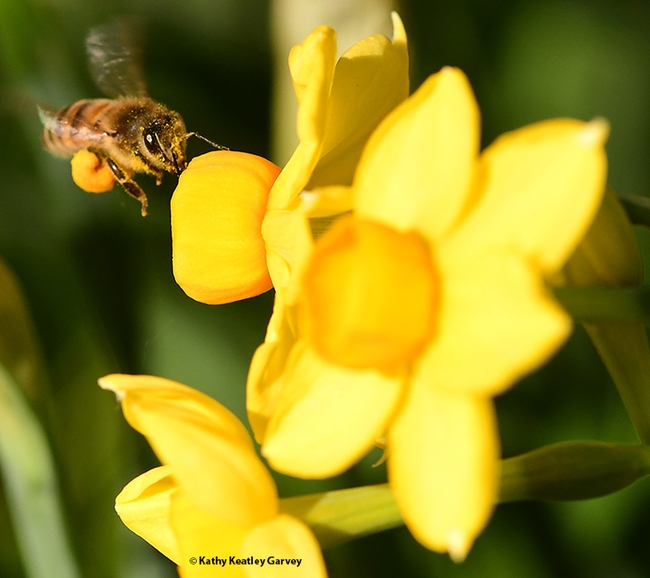
A pollen-packing honey bee heads a patch of daffodils on the UC Davis campus. (Photo by Kathy Keatley Garvey)
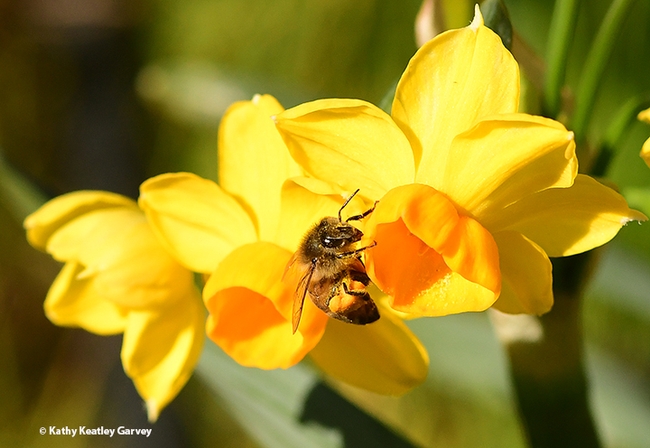
A honey bee adjusts her load of pollen. (Photo by Kathy Keatley Garvey)
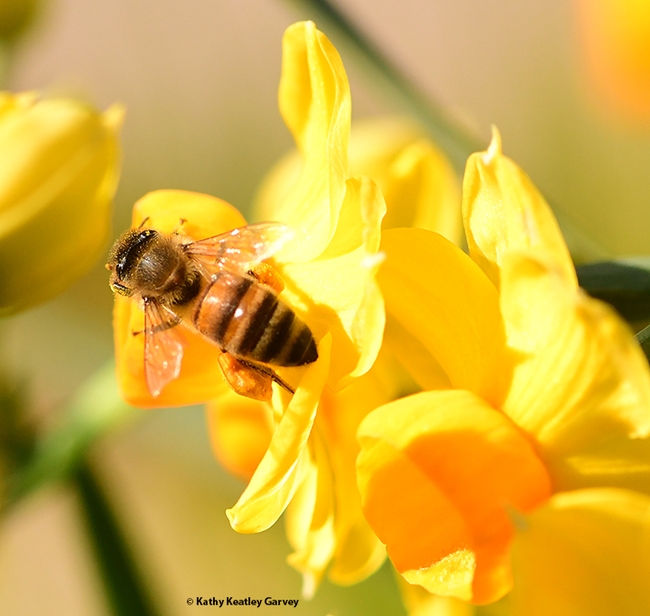
A golden honey bee with a load of golden pollen from golden daffodils. (Photo by Kathy Keatley Garvey)
Honey Bees and the Hot Spell
Earlier this week the National Weather Service warned us about an excessive heat spell--"dangerous and record-breaking heat conditions" here in...
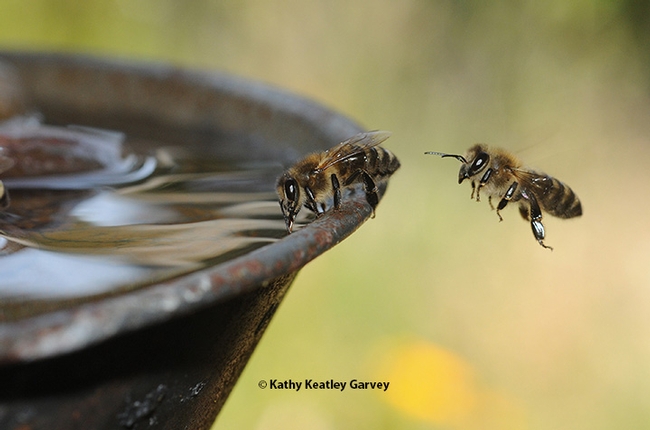
Honey bees at a water fountain at the Harry H. Laidlaw Jr. Honey Bee Research Facility, UC Davis. (Photo by Kathy Keatley Garvey)
What Do Honey Bee Colonies Do During a Raging Wildfire?
What do honey bee colonies do when a raging wildfire heads straight toward their hives (bee boxes)? No, the bees do not abscond with their queen and...
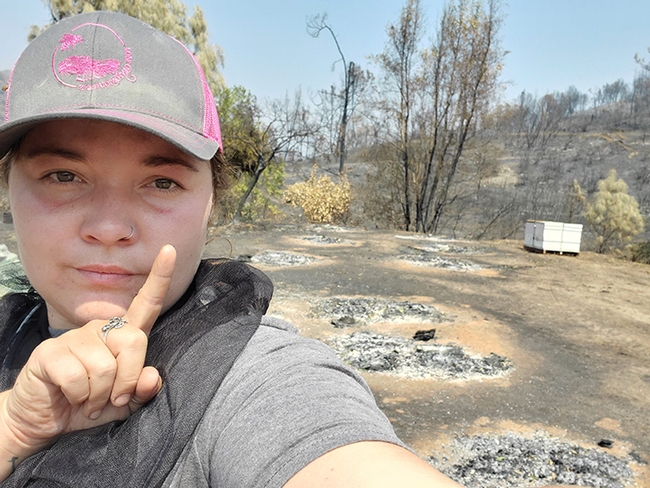
Caroline Yelle, owner of Pope Canyon Queens, lost some 500 hives during the Aug. 19 Vacaville fire. (Photo by Caroline Yelle)
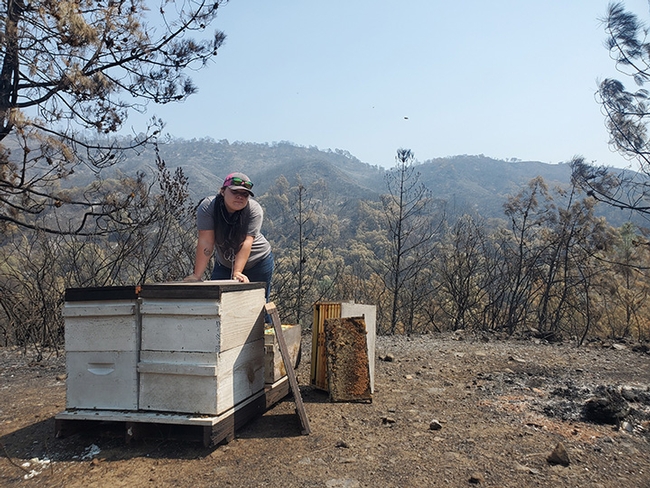
Caroline Yelle, owner of Pope Canyon Queens, checks her losses in the Aug. 19 Vacaville fire. (Photo by Caroline Yelle)
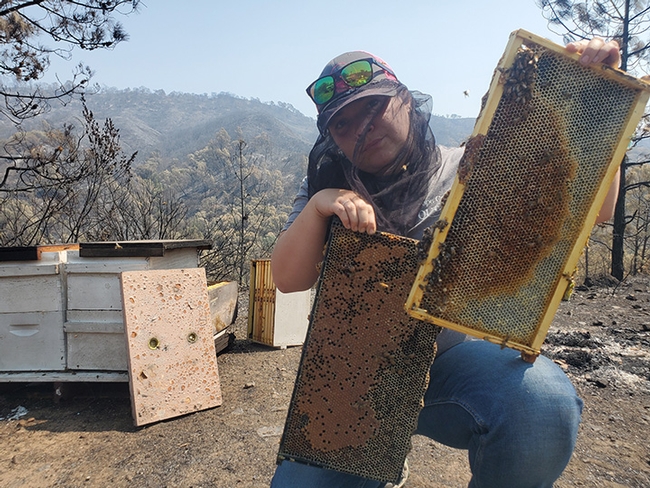
Dead brood and dying bees are in the half-burned hives belonging to Caroline Yelle, owner of Pope Canyon Queens. (Photo by Carolyn Yelle)
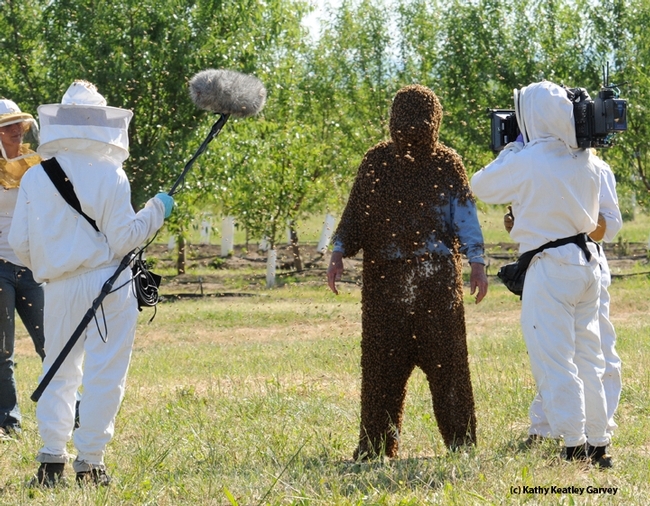
Beekeeper Rick Schubert, who lost his farm and bees in the Aug. 19th Vacaville fire, provided the bees for UC Davis professor Norm Gary's research and bee wrangling for more than 30 years. (Photo by Kathy Keatley Garvey)

